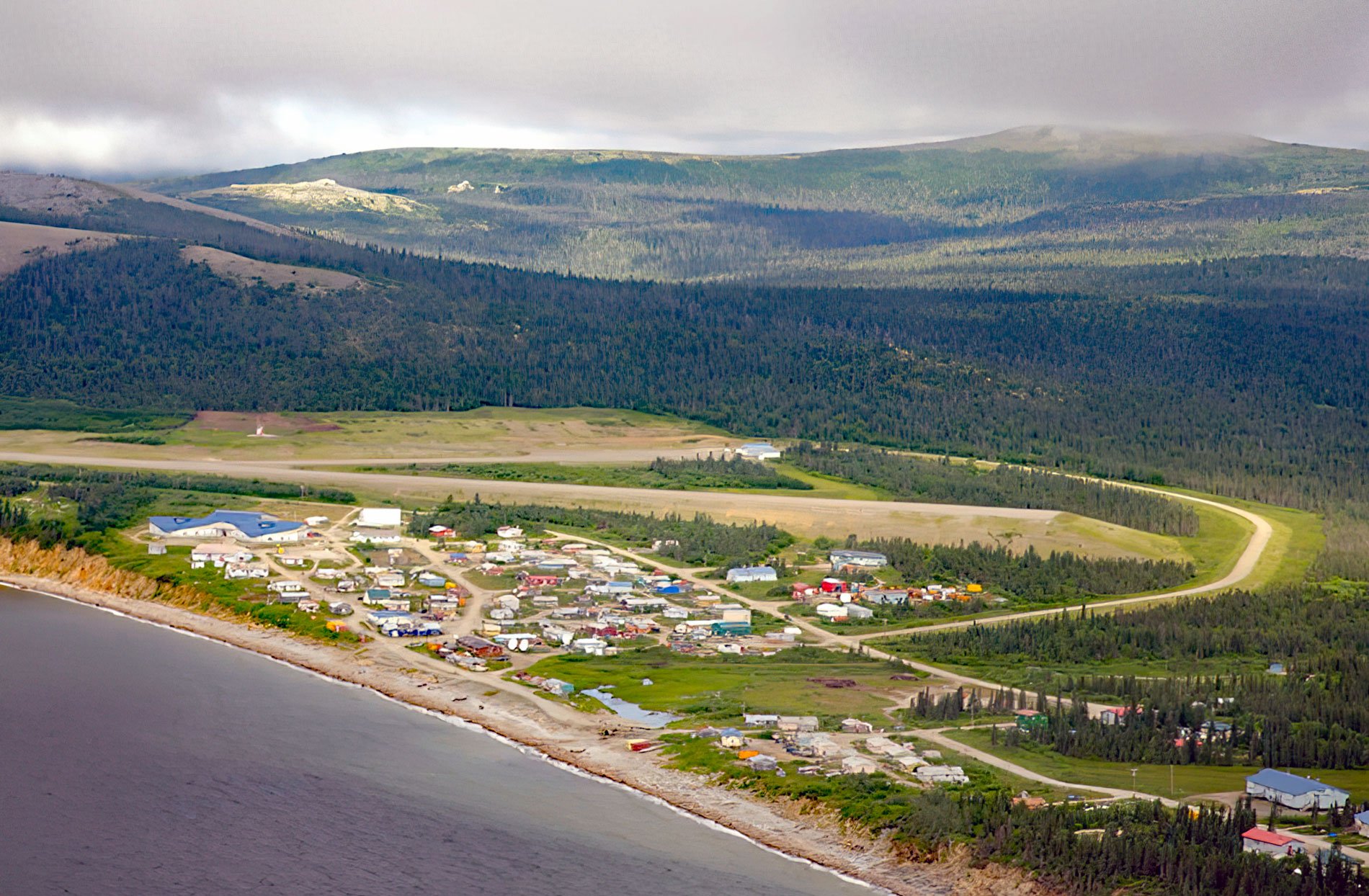Elim is a mixed Central Yup’ik and Iñupiaq community situated on the Iditarod Trail at the mouth of Elim Creek on the Seward Peninsula and the north shore of Norton Bay, about 39 miles (63 km) southwest of Koyuk and 24 miles (38 km) east-northeast of Golovin, Alaska. The village was founded in 1913 as the Elim Mission Roadhouse by Reverend Ludwig E. Ost, and reputedly named after the biblical place where Israelites camped following their Exodus from Egypt. Elim Creek starts from an elevation of roughly 950 feet (290 m) on the eastern flank of Peak 1264 in the Darby Mountains and flows generally southeast for 3.5 miles (5.6 km) to Norton Bay. The Darby Mountains trend generally north-south and extend approximately 75 miles (121 km) from Cape Darby in the south to the Bendeleben Mountains in the north. Wave action along the coast of Norton Bay has produced a rugged coast with high cliffs and a narrow beach. The greater part of the range is characterized by relatively low well-rounded tundra or vegetation-covered hills. The underlying bedrock of the Elim Creek watershed is mostly metamorphosed turbidites that developed from the Devonian to Cambrian and consist of black marble and calcareous schist that is exposed in sea cliffs along Norton Bay and the rubble-covered hills inland.
Before the arrival of Russian fur traders in the 19th century, the northern Seward Peninsula was inhabited by Iñupiat language speakers, such as the Bering Strait and Malemiut people, and the southern coast of the peninsula was inhabited by speakers of Unalit, a Yup’ik language. In the 1800s, as a result of the fur trade and introduced diseases, the Malemiut moved southward from Kotzebue Sound into Unalit territory. The mouth of Elim Creek on Norton Bay was the site of a Yup’ik summer fish camp they called Niviarcaurluq or Nevlarcurluq. When the Malemiut moved in they called it Nuviakchak. In 1899, a series of epidemics devastated the Seward Peninsula region and many of the Iñupiat and Yup’ik children who lost their parents and families went to the Covenant mission at Golovin. By the spring of 1900, the missionaries determined that a larger children’s home was needed and chose a new location south along the coast near Carolyn Island, co-located with a federal reindeer reserve, and away from the bad influence of the prospectors at Golovin. In 1910, Reverend Ost and his wife Ruth took over the school but a storm in 1913 destroyed much of the mission, forcing the decision to again move to a location farther into Norton Bay. Several locations east of Cape Darby were considered and ultimately, the location at Elim Creek was chosen by Native elders because of the easy access to seals in particular, but also to wood, fresh water, fish, and other subsistence foods.
In 1917, 350,00 acres (141,640 ha) around the present-day village of Elim were set aside, via a Presidential executive order, as the ‘Norton Bay Indian Reservation‘ for the use of the inhabitants of the village of Elim. In 1929, 50,000 acres (20,235 ha) were removed from the reservation following a lobbying effort by mining interests. In 1971, during negotiations related to the Alaska Native Claims Settlement Act, the village of Elim chose to opt-out and instead sought title to land in lieu of other benefits. The Elim Native Corporation also gained title to another 50,000 acres (20,235 ha) and has outright ownership of this land. In 1974, Elim was one of the first villages in the region to establish a plumbing system for potable water, a sewer system, a health service, and a modern airport. There is a maintained road that leads from Elim to Moses Point for access to numerous fish camps and many residents are engaged in commercial fisheries for king crab, herring, and salmon. Read more here and here. Explore more of Elim and Norton Bay here:

